The case for pickle-frying your chicken
Chicken’s greatest power is its ability to retain flavor, which is why you should regularly prep your poultry in a savory brine. One such brine being embraced by everyone from Bon Appétit to KFC: pickle juice.
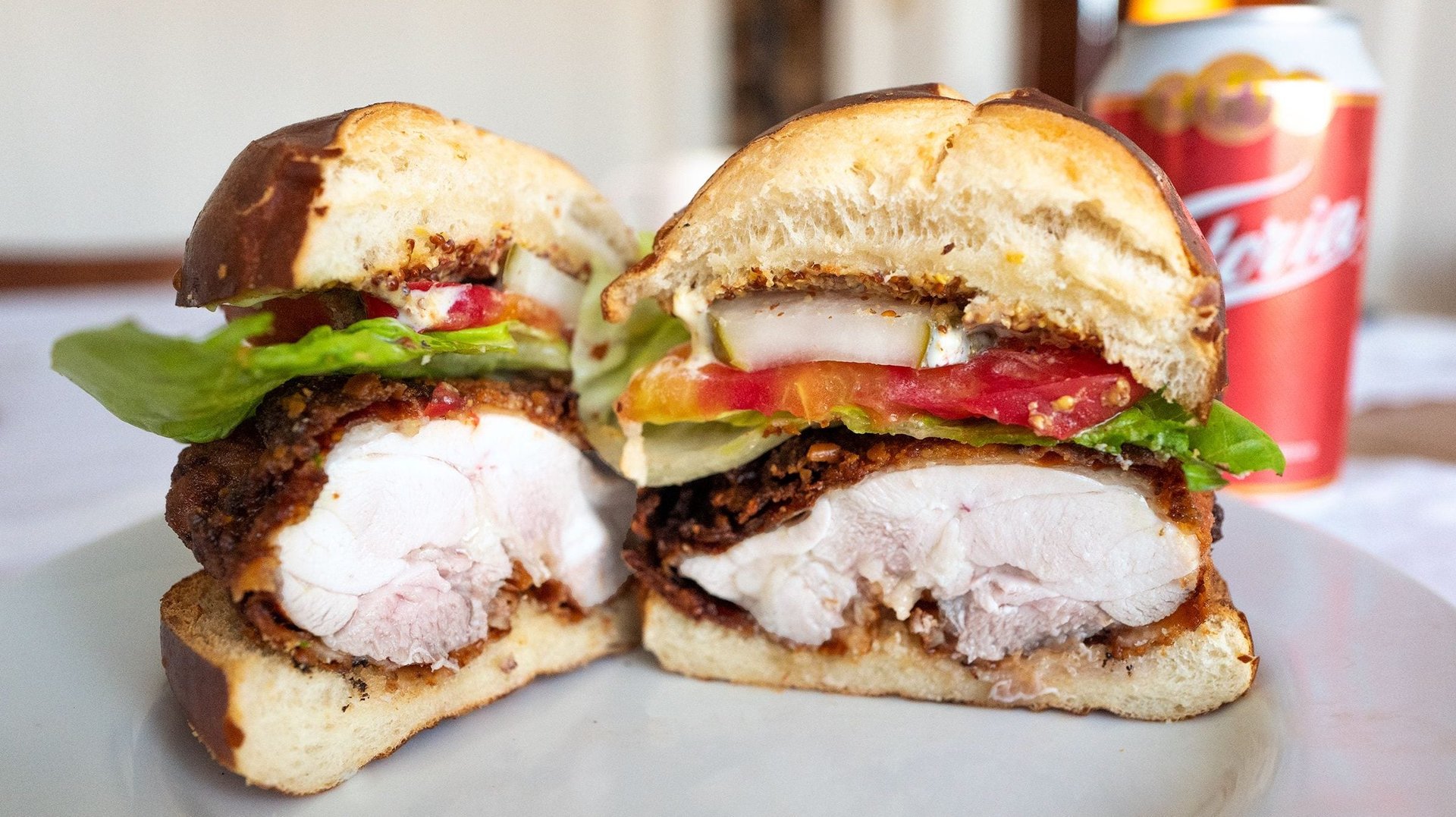

Chicken’s greatest power is its ability to retain flavor, which is why you should regularly prep your poultry in a savory brine. One such brine being embraced by everyone from Bon Appétit to KFC: pickle juice.
Yes, pickles have seen their share of dubious hype (see: pickle pops and pickle-juice slushies). But pickle-fried chicken has far more nuance. It takes advantage of brining for its culinary properties, while stealing the aromatics of coriander, peppercorn, dill, and fennel. The chicken’s crispy, flaky exterior complements fall-apart meat that holds a salty-sweet delicate flavor. It’s perfect for a hot-summer-night meal, or to make waves at your next barbecue. (It might might even aid in digestion.) Whether you’re a skilled chef in a fancy kitchen, or a hungry homebody with two cutlets and an old jar of pickles, rustling up the perfect PFC is absolutely worth your while.
What you’ll need
Before you buy a jar of pickles just for their jus, consider making some yourself. It’s quick, your pickles will taste better, and you’ll have your own homemade ones to eat with the chicken. Here’s a recipe I use to pickle kirby cucumbers.
Place your washed cucumbers in a food-safe container—the count doesn’t matter, just however many can fit inside. (I used a two-quart glass jar and was able to fit six kirbys in there comfortably.) Whisk all the ingredients from above in a bowl until the salt is fully incorporated. Pour your brine into your jar, filling it up until the cucumbers are completely submerged.
Let them sit together overnight. They’ll reach peak crispness around the three- to four-day mark, but will also taste pretty good after a few hours if you’re in a rush.
No time for all that? No problem. Pickling juices come in two main forms: fermented and salt-and-vinegar. Both work for preserving vegetables, but only the latter will do when it comes to brining chicken for frying. Fortunately, most store-bought pickles are of the salt-and-vinegar variety.
Now for the chicken-frying. You can fry your chicken however you’re comfortable, but I personally go with a buttermilk fry (plus bits of saltines in the dry ingredients) for a golden crispy exterior. For that you’ll need:
How to make it
Whether you made your pickle juice or got it at the store, you’ll need to soak your chicken thighs in the solution. For less mess, I pour the brine into a pitcher or mixing bowl, and place my chicken into the newly vacated container. Once the meat’s in the jar, pour your juice back in. If you can, let it sit overnight or at a minimum of two hours.
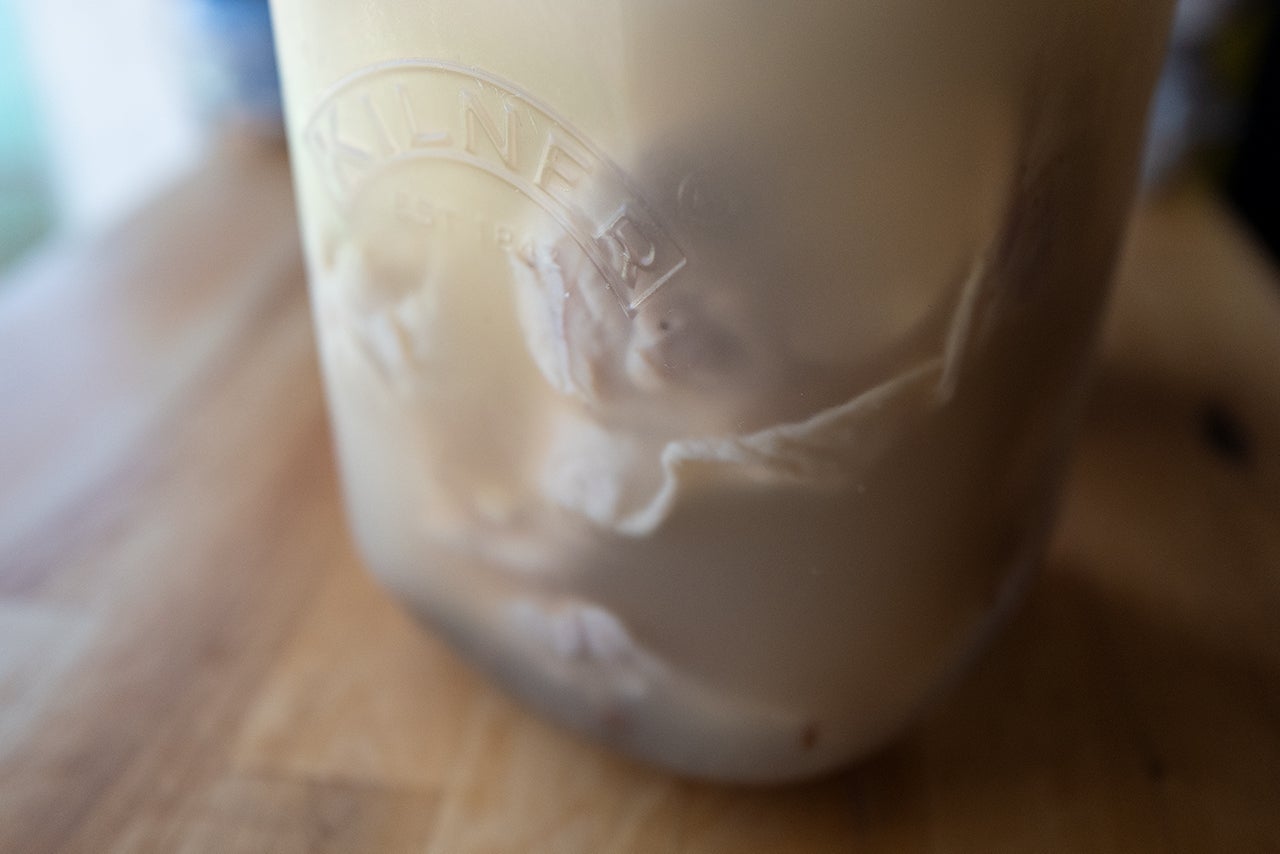
Set aside two mixing bowls; fill one with the buttermilk and the other with the dry ingredients. Dunk the chicken into the buttermilk and then dredge it with the dry ingredients.
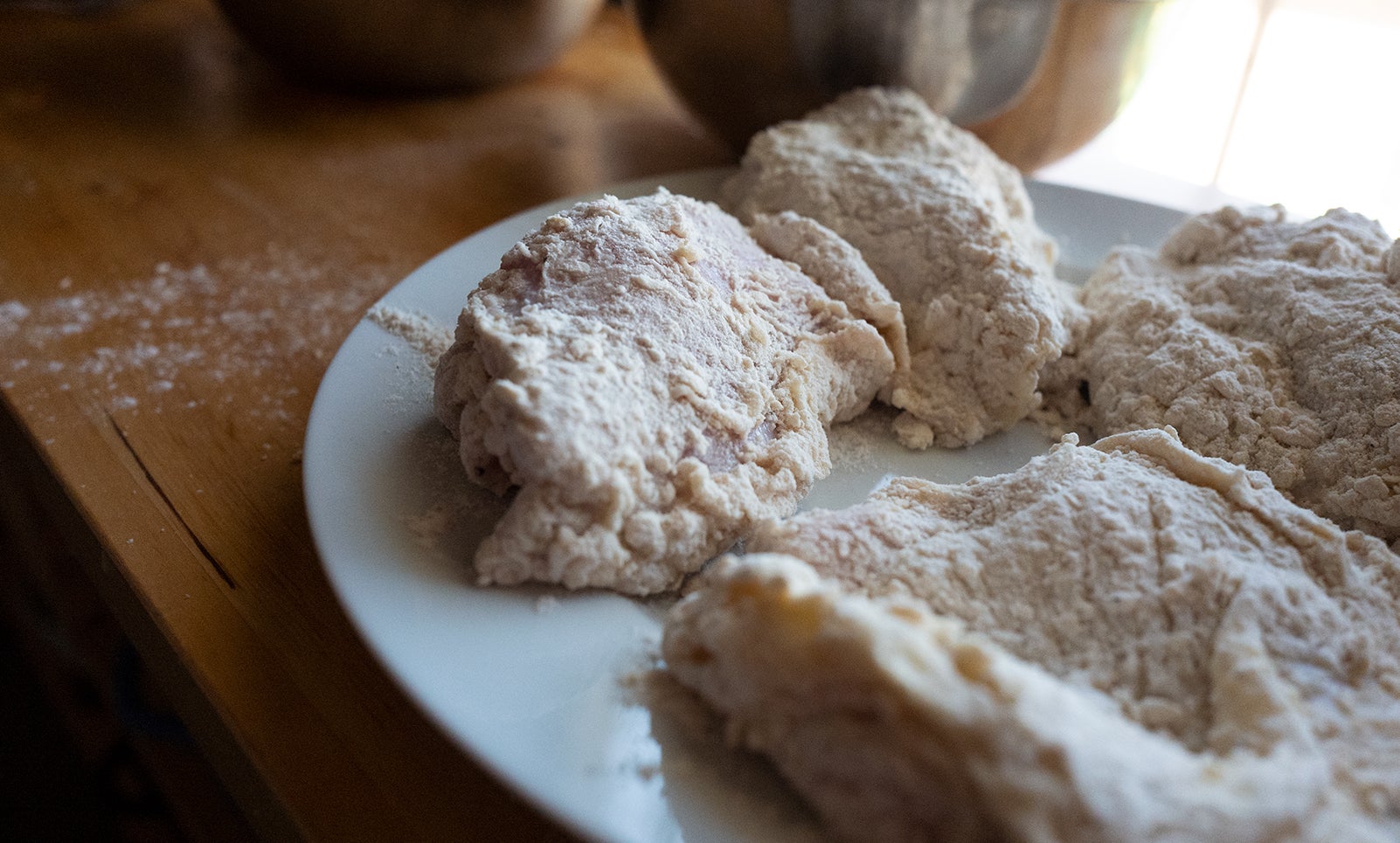
In a stock pot (or 16-inch, cast-iron pan for Southern vibes), heat the oil to 350° F (177° C). Fry your chicken evenly, checking with a meat thermometer until the internal temperature reaches 165° F (74° C). Set the finished chicken on some paper towels to pull out the residual oil and cool.
Prepare for joy.
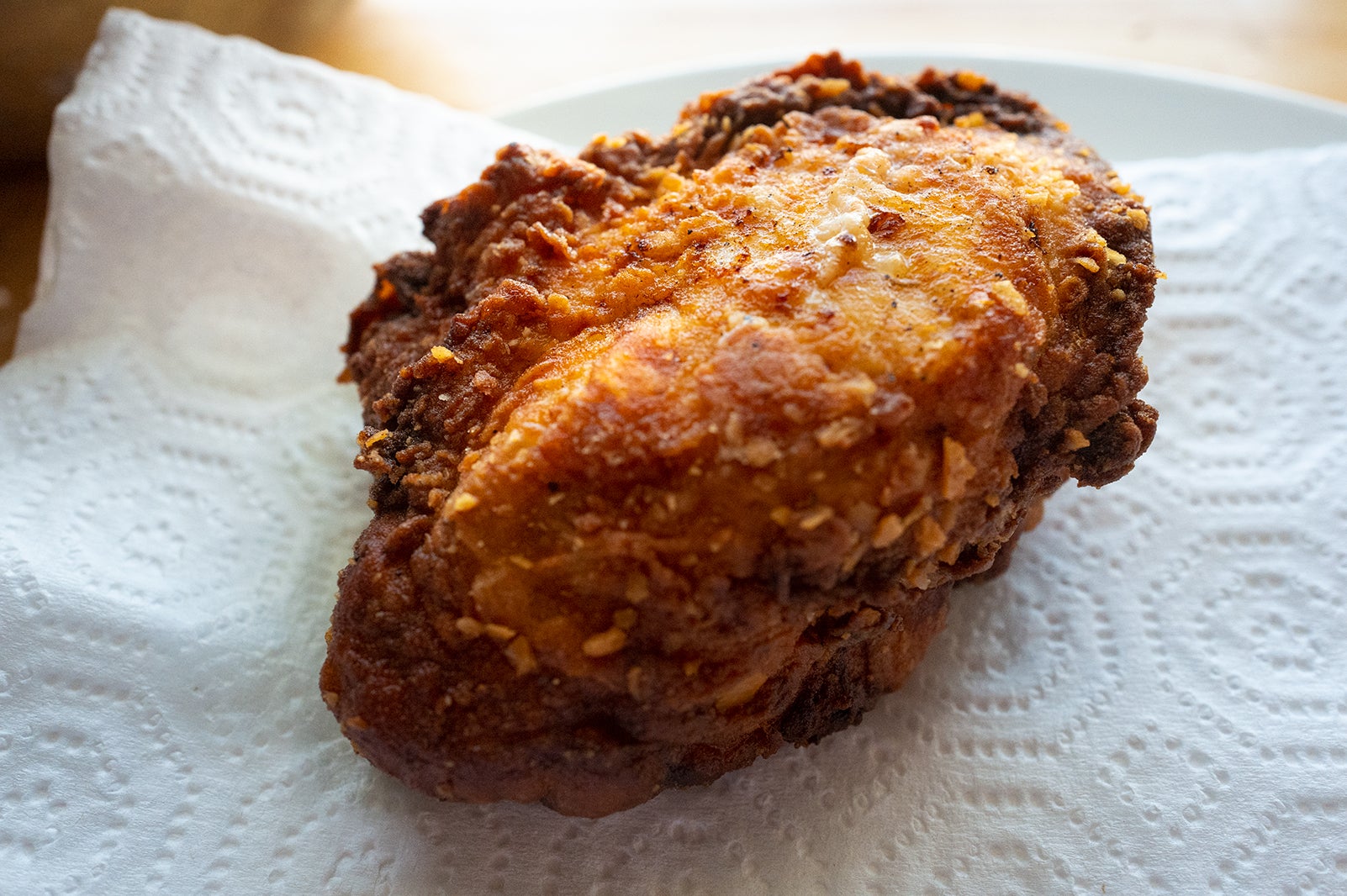
Why PFC is (scientifically) delicious
When you brine chicken, you’re using a bit of simple chemistry to change the structure of the meat itself. It’s a threefold operation.
Denature the protein
The introduction of table salt (sodium chloride), through the brine, transforms the molecular structure of the chicken’s protein. Consider the shape of a protein. They’re naturally spring-like structures known as an alpha helix. The salt denatures this form, uncoiling it into the microscopic equivalent of a wet noodle. If there’s vinegar in your pickle mix, its acidity will further denature the protein structure by breaking down hydrogen bonds that make up the protein’s primary structure. Acid effectively “cooks” the protein in the same way applying heat does. Too much acid, like slow-cooking meat too long, will result in your chicken having an unsavory, wet-paper-like texture.
Osmosis
Within the meat, our uncoiled proteins spread out like a net. Meanwhile, salt water enters the chicken through osmosis. Since our proteins are evenly spaced, salt-water molecules fit the gaps in our protein net. When moisture is distributed like this in meat, it creates the flaky, fall-apart texture we look for in tender fried chicken.
Maillard Reaction
The pickling spices don’t make it to the center of the meat; the compounds in the spices are far too large to penetrate the flesh that deeply. They do, however, bind to the exterior of the chicken, adding a pickle’s tartness to the final flavor. They also contribute to a color and a savory quality via what’s called the Maillard reaction. When the acids and sugars on the exterior of the chicken meat hit our fryer’s high temperatures, they brown in the same way bread does when toasted. This is known as non-enzymatic browning and results in savory, umami flavors.
How to enjoy your PFC
To each their own, but my preference is a PFC sandwich on a toasted pretzel bun with butter lettuce, kewpie mayo, sliced heirloom tomatoes, stone ground mustard, and—of course—sliced dill pickles.
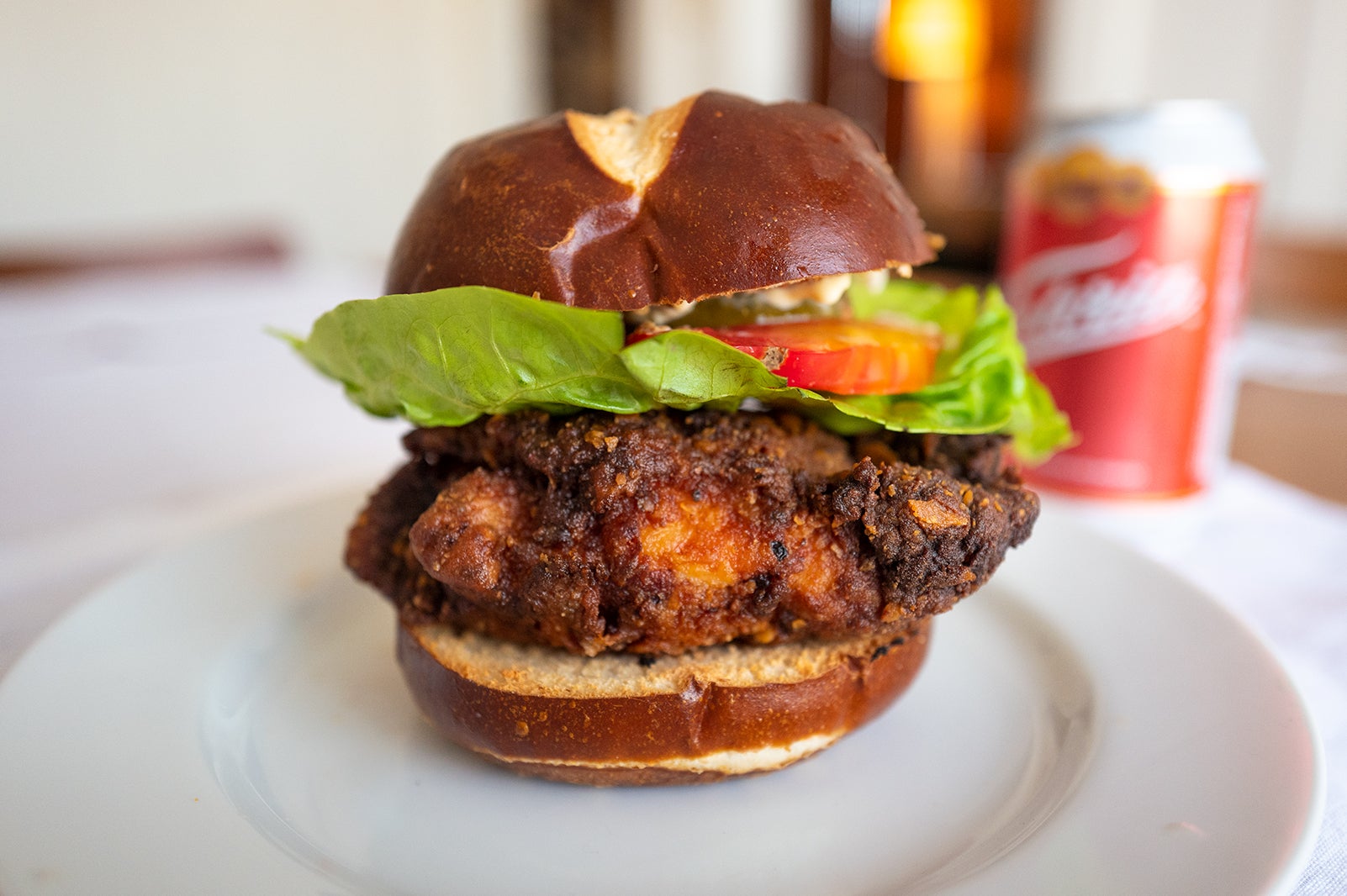
Once your masterpiece is complete, taste for yourself the science that made your moist, flaky, crispy, pickle-y masterpiece of chicken.